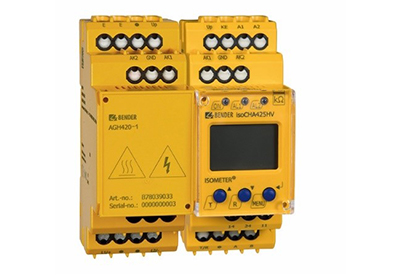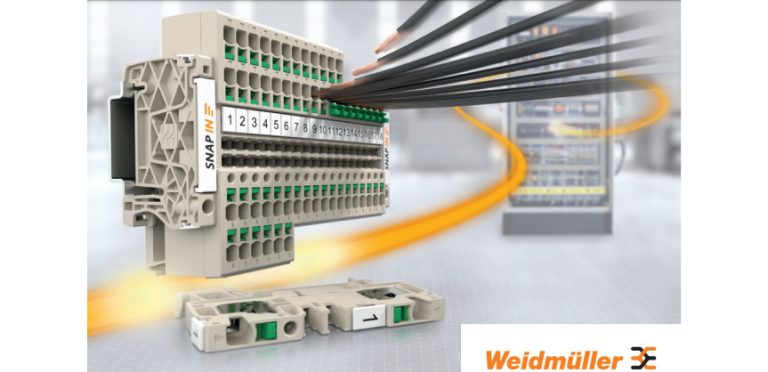Bender: IsoCHA425 – One Device, Two Charging Standards

March 31, 2021
Bender, a manufacturer of electrical safety products worldwide, has recently released a new insulation monitoring device, the isoCHA425HV+AGH420-1, that meets both common charging standards: CSS and CHAdeMO. This will benefit EVSE manufacturers that employ both systems in a single DC fast charging station. Until now, two different devices have been required for insulation monitoring in DC fast charging stations.
A galvanically isolated Modbus RTU interface is available for communication with the device. Customer-specific parameters are preset for the respective standard. Changes to the settings can be accomplished via a pushbutton and menu structure on the device or via the Modbus protocol. The device is designed for voltages of up to 1,000 V, thus already taking ever increasing battery voltages into account.
In addition to monitoring the insulation level, the device is also capable of measuring the nominal voltage during charging and will alarm if the voltage exceeds or drops below self-defined limit values. Furthermore, the system leakage capacitance of the charging station and the vehicle is monitored. If insulation faults occur, the fault location is displayed (DC+/DC-/symmetrical). This helps the service technician assess the status of the charging station and facilitates fault location.
Technical features:
- – Fast trip on asymmetric faults ≤ 1 second
- – Trip on symmetrical faults
- – Voltage measurements up to 1,000 V
- – Modbus RTU communication
This is a major benefit compared to conventional insulation monitoring devices for DC charging stations. According to CHAdeMO, typical IMIs only monitor single-pole faults and do not detect symmetrical faults. Environmental factors can lead to aging of the charging cables, which generally results in a consistent drop in the insulation level, so that, in the event of symmetrical faults, there is no tripping, even though the insulation level has dropped. The Bender IMIs features make it possible to increase the protection level in CHAdeMO mode which leads to an increase in safety for users and equipment.






